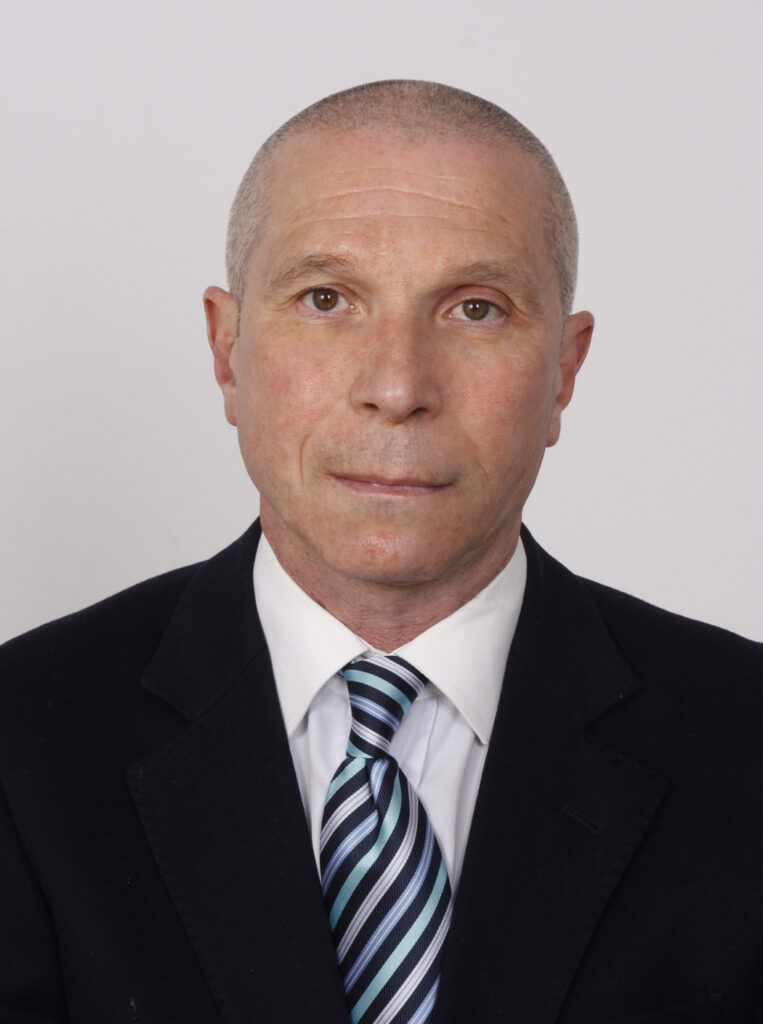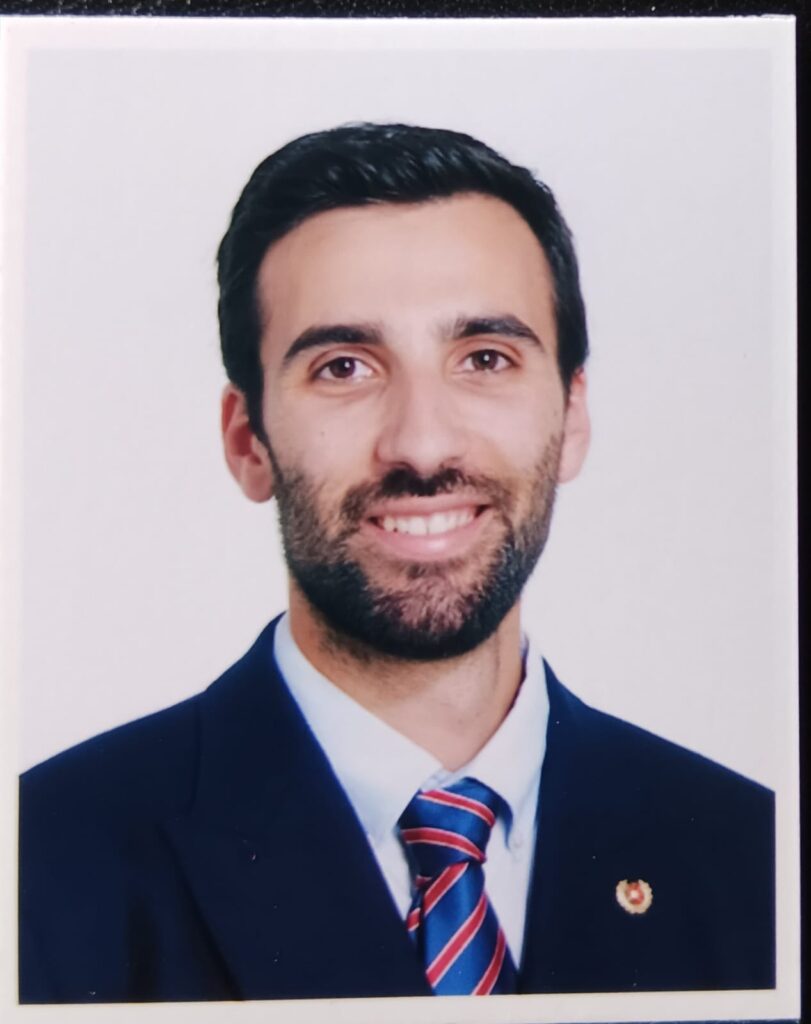The drafting of this article included bibliographical research and also an exclusive interview with Walter Bruyère-Ostells, Director of the Master in Geostrategy, Defense and International Relations and co-Director of the Specialized Master in Intelligence at the Institute of Political Studies / Sciences Po Aix (France) / French Air and Space Force Academy (Specialised Master in Intelligence).
By Jorge Marinho, Júlio Ventura and Lourenço Ribeiro
International Relations scholars’ interest in intelligence-related issues should grow, together with the increasing presence of these subject matters in the public stage (Díaz May 2005, p. 2). For instance, in 2008, the Canadian Security Intelligence Service sought to improve relations between academic work and the intelligence sphere, via the Academic Outreach program (Kuosa 2014, p. 67). For this purpose, conferences, workshops and interviews were held, among other initiatives (Kuosa 2014, p. 68). For academics, researching the field of intelligence is difficult, owing to the secretive nature of intelligence activities. At times, it becomes necessary to wait until a few original documents are declassified (Wasielewski June 20, 2023). Many universities feel there is no point studying intelligence (Wasielewski June 20, 2023). However, there are even those who call for disclosing intelligence research to the general public, knowing that this is a challenge (Wai December 8, 2020).
From Walter Bruyère-Ostells’ standpoint, difficulties researchers face within the academic context, when they delve into intelligence services, are, to a large extent, due to a lack of knowledge and mutual prejudices in relation to each other’s backgrounds. Said expert adds that the sphere of intelligence in France is viewed in a manner that is too restricted and derogatory while often being associated with spies and spooks. Walter Bruyère-Ostells maintains that forums should be developed in order to make known what the world of intelligence actually consists of.
The way Walter Bruyère-Ostells sees it, a mutually beneficial cooperation can be established between intelligence-related university study programs and intelligence services. This scholar points out that, in France, at Sciences Po Aix, an Intelligence Chair is being developed which relies on recognition and backing from the National Coordination of Intelligence and Counter-terrorist Efforts and from the Intelligence Academy. Bruyère-Ostells adds that speakers working in intelligence services take part in courses and events of said Chair and that students can undergo internships and do works on topics that intelligence services take interest in.
According to Wasielewski (June 20, 2023), intelligence consists of knowledge and analysis designed for assisting action. Actually, intelligence is crucial for backing foreign policy. This occurs in several countries, such as the U.S. (National Intelligence Strategy 2023, p. 2), Switzerland (Federal Act of 25 September 2015 on the Intelligence Service (Intelligence Service Act, IntelSA)) and Israel (Golub July 3, 2021). Regarding the United Kingdom, William Hague (November 16, 2011), then serving as Foreign Secretary, stated that intelligence is present in many of the more relevant priorities of foreign policy. From the standpoint of Hague (November 16, 2011), intelligence needs to be regarded in light of the Government’s set of strategies and goals.
A country’s interests concerning foreign policy need to be taken into account when planning intelligence activities abroad (Special Report on the National Security and Intelligence Activities of Global Affairs Canada 2022, p. 19). It is vital for foreign policy to entail coherence (Special Report on the National Security and Intelligence Activities of Global Affairs Canada 2022, p. 19). Current Central Intelligence Agency (CIA) Director William Burns (January 30, 2023) understands that intelligence serves to predict in-depth changes on the international scene and, in this context, to lend support to policymakers. The latter have to realize that intelligence is an art, not a science that guarantees results (Wasielewski June 20, 2023). Intelligence consumers need to know the capabilities and limitations of intelligence services (Wasielewski June 20, 2023).
Strategic intelligence
According to Pareja (April 11, 2022), the process of data collection and analysis aimed at formulating information-based decisions and policies is known as strategic intelligence. This does not seek to solve present-day problems; rather, with a long-term perspective, it is intended to back national strategy (Díaz 2014, p. 34). Strategic intelligence, through its assessments, should contribute towards policymakers understanding a certain context, taking advantage of opportunities and managing risks (Simon-Tov, Hershkovitz June 2017, p. 87).
Monitoring the international situation goes by way of strategic intelligence (Defense Primer: National and Defense Intelligence November 29, 2022). This enables leaders to grasp the geopolitical factors influencing international relations (Mandel, Barnes July 14, 2014). Strategic intelligence is essential for forming a Government’s foreign policy (Pareja April 11, 2022) and for upholding national interests (Silva, Ribeiro November 2018, p. 177). For policymakers of countries such as the United States, the Intelligence Community’s (IC) provision of strategic intelligence constitutes an advantage vis-à-vis rival powers (Katz April 17, 2020). Policymakers should be willing and able to think strategically (Hutchings, Treverton October 2018, p. 14).
To intervene in the international sphere, experts’ in-depth knowledge becomes necessary, and this is what strategic intelligence provides (Heidenrich 2007). This sort of intelligence, somehow seeking to uncover the future, combines social, cultural, technological, economic, political, military and diplomatic domains (Alonso-Trabanco May 19, 2020). Strategic intelligence allows using data sources to understand the big picture (Neuman, et alii May 2006, p. 473). In William Hague’s view (November 16, 2011), cooperation between intelligence services is essential, given that intelligence is like a puzzle in relation to which, in most cases, an intelligence service per se does not comprise all the pieces needed to complete it.
Intelligence diplomacy
Currently, intelligence services directors actively participate in the processes that determine foreign policy (Daricili January 7, 2022), among other aspects. In this regard, a variety of examples can be given. Recently, on the part of the U.S., the CIA Director met with the Director of Mossad, one of the Israeli intelligence services, and with the Prime Minister of Qatar, to address the possibility of an agreement between Israel and Hamas, a Palestinian organization, leading to an exchange of hostages and prisoners (Barnes December 18, 2023). When Hakan Fidan, Turkey’s current Foreign Minister, headed the Turkish National Intelligence Organization (MIT), he was already regarded as highly influential in his country’s foreign policy (Yildiz June 4, 2023). As MIT leader, Fidan was considered to be someone who, having a vast network of international contacts, was noteworthy in steering Turkey through the complex arena of global politics (Yildiz June 4, 2023).
Walter Bruyère-Ostells feels that when intelligence service department heads are interested in research, even conducting it, they acquire a stringency and analysis capability that can be useful if they end up becoming rulers one day.
History records various instances of Governments that declassified and made use of data from intelligence services in order to influence or back policy decisions (Marleku November 1, 2023). However, particular attention needs to be paid to the role of intelligence in both the U.K. and the U.S., before and during the current Russia-Ukraine war, which broke out on February 24, 2022, disclosing information aimed at preventing the conflict and pressuring allied countries, especially France and Germany, into making decisions against Russia (Marleku November 1, 2023). All this constitutes a new milestone in the diplomatic and political use of intelligence in international affairs, while asserting itself as a foreign policy instrument (Marleku November 1, 2023). In this respect, Holmgren (October 8, 2023) speaks of intelligence diplomacy. This expert considers that, in the U.S., for a long time now, intelligence has comprised a strong suit for diplomats, when influence and persuasion are essential for achieving political outcomes (Holmgren October 8, 2023).
Walter Bruyère-Ostells believes that, compared to conventional diplomacy, intelligence diplomacy’s advantage is that it’s invisible to public opinion. This enables discussions with a greater extent. Also regarding advantages, said scholar thinks that intelligence diplomacy presents realistic diplomatic options, given that, in principle, intelligence is less subject to an ideological discourse than conventional diplomacy. Bruyère-Ostells underscores that, in a democracy, final decisions should be made under the people’s sharp lookout.
Currently, in order to fulfill the State Department’s mission, the backing of intelligence is increasingly important (Holmgren October 8, 2023). According to William Burns (January 30, 2023), in certain cases, intelligence diplomacy can serve to elicit common interests as well as to discretely support U.S. diplomats and policymakers. Hague (November 16, 2011) states that the U.K.’s intelligence services have forged relations with government sectors of other countries, thus contributing toward supplementing and strengthening British diplomacy.
When there is a high degree of trust in intelligence services, leaders tend to more readily consider intelligence diplomacy as a possibility for attaining their objectives (Taylor 2023, p. 6). This sort of diplomacy shows intelligence services’ multiple capabilities and should be carefully used, supplementing conventional diplomacy without replacing it altogether (Taylor 2023, pp. 8-9).
Intelligence analysts and policymakers
For intelligence services, clearly knowing what they will be backing increases support efficacy (Fagersten October 2015, p. 11). Intelligence analysis differs from academic analysis, to the extent the former’s particular interest lies in underpinning the political process, whereas the latter chiefly aims to theorize (Ashraf March 8, 2015). Intelligence analysis is regarded as a critical phase of the intelligence process (Arslan 2021, p.1).
To a certain extent, Haas (2002) regards as positive the IC’s tradition of maintaining that its analyses need to remain separate from policymaking, so as to avoid their politicization. However, this expert believes that analysts need to be aware of what is of interest to policymakers; otherwise, their work risks being irrelevant (Haas 2002). Given that intelligence analysis serves to provide information needed by political decision-makers to arrive at their decisions, it is wise to engage in a mutually beneficial dialogue between rulers and the IC (Lieberthal September 15, 2009). Due to its closeness, this relationship could undesirably result in some tension between intelligence professionals and policymakers (Huminski 2023, p. 18). From Eisenfeld’s standpoint (2017, p. 96), intelligence will never be completely separate from politics or altogether immune to the effects of politicization.
The integrity of IC professionals is vital for the decision-making not to be defiled (Memorandum on Revitalizing America’s Foreign Policy and National Security Workforce, Institutions, and Partnerships February 4, 2021). In this context, the analyst’s professional ethics are highly important (Wald 2006, p. 259).
Wald (2006, p. 271) considers that intelligence services should provide some sort of training to analysts as concerns their relationship with policymakers. According to Lotta Lampela, then Intelligence Adviser to the Director of European Union Intelligence Analysis Centre (EU INTCEN), intelligence services should also show initiative in educating / training their customers (Kuosa 2014, p. 75). From Lampela’s standpoint, this enables creating understanding and trust among the parties concerned (Kuosa 2014, p. 75). In Wasielewski’s view (June 20, 2023), policymakers need to study intelligence, and this should not take place solely in on-the-job-training situations.
Comunication
Communication constitutes the link between intelligence collection, analysts’ work and decision-making, which is why this is a key aspect of intelligence (Hammond-Errey February 9, 2023). Those wishing to communicate effectively in policymaking systems need to become aware of the policymakers’ environment (Cairney, Kwiatkowski November 28, 2017). Regarding challenges, in the field of communication, between intelligence services and policymakers, Lotta Lampela underscores the need for the message to be received in a timely manner, highlighting the importance of the present situation, and to be properly understood, to avoid instances where concepts comprise variable interpretations (Kuosa 2014, p. 76). Also concerning said field, Kaivo-oja maintains that planning communication channels needs to improve (Kuosa 2014, p. 76). As concerns the COVID-19 pandemic, regarding the U.S., several experts argue that, when dealing with matters of crucial importance for national security, efficient communication is critical between the IC and those holding the highest Government positions (Lankford, et alii December 3, 2020). The feedback that policymakers pass on to intelligence services is often insufficient (Mohr April 25, 2023). Analysts need detailed feedback in relation to what they produce (Mulligan, Schmitt September 18, 2020).
Institutional fragmentation, as can occur in the case of the European Union (EU), hampers communication between analysts and diplomats (Ikani, Meyer November 11, 2022). Concerning the EU system, there are multiple origins, perspectives, formats and conclusions of intelligence, without comprising a single entity to bring them together, provide comparative analysis and forward such intelligence to senior leadership (Ikani, Meyer November 11, 2022). Under such circumstances, there can be too much information and senior officials can end up being confused (Ikani, Meyer November 11, 2022).
Conclusion
Research in the field of intelligence services constitutes a challenge, for starters given the difficulties related to the secretive nature of the various intelligence activities. It often becomes necessary to wait until certain documents are declassified. While many universities decide not to offer intelligence-related study programs, this topic is increasingly gaining a foothold in the public domain. However, the academic sphere contains examples of mutually beneficial cooperation between certain study programs and intelligence services.
Among several aspects, intelligence is highly important with regard to the backing given to policymakers, as part of foreign policy. With a global perspective and a long-term vision, strategic intelligence monitors the international situation, enabling politicians, in terms of the big picture, to gain an understanding of the multiple geopolitical factors influencing international relations. The complexity of intelligence is comparable to a puzzle relative to which the pieces needed to complete it might not be found with a single intelligence service and, hence, cooperation between intelligence services, domestically and internationally, take on particular relevance.
Currently, and in reality, intelligence services directors actively take part in the processes that determine foreign policy and, in certain cases, they even play a noteworthy role in international relations. This is part of what is known as intelligence diplomacy. This can be regarded as complementary to conventional diplomacy.
Intelligence analysis provides information that rulers need for making decisions, and so there has to be dialogue between the IC and political decision-makers. This relationship will be all the more positive with increasing mutual knowledge; this could result from training initiatives with intelligence services professionals, including analysts, and with rulers. Such rulers need to have a realistic idea of the intelligence services’ capabilities.
While contacts between policymakers and the IC are a reality, a variety of experts consider that politicizing the operational department and analytical activities need to be avoided, maintaining their neutrality and professionalism, for the benefit of rulers’ decision-making quality. Within this context, the ethics of intelligence services professionals are important.
Regarding the domain of communication, intelligence services’ messages need to reach policymakers in a timely manner, via appropriate channels, and whose content has to be properly understood by the recipient. In this regard, policymakers’ feedback is vital.
This article was first published by Marinho Media Analysis, on May 9, 2024 – http://www.marinho-mediaanalysis.org/articles/strategic-intelligence-and-intelligence-diplomacy-in-the-sphere-of-foreign-policy
About the authors:
Jorge Marinho: PhD in Communication Sciences, BA in International Journalism
Júlio Ventura: MA in Political Science and International Relations, BA in Law, member of the European Parliament trainee (Brussels, Belgium)
Lourenço Ribeiro: BA in Sociology, MA student in Public Policy at Iscte – University Institute of Lisbon (Portugal)
E-mail: marinho.mediaanalysis@_nour
References
Alonso-Trabanco, J. (May 19, 2020). The Emerging Nexus of Strategic Intelligence, Geopolitics and Finance. Retrieved 26.12.2023 from https://www.geopoliticalmonitor.com/the-emerging-nexus-of-strategic-intelligence-geopolitics-and-finance/
Arslan, C. (2021). Why Intelligence Analysis Matters. In M. Erendor (Edited by). The Role of Intelligence and State Policies in International Security. Cambridge Scholars Publishing. Retrieved 5.2.2024 from https://www.cambridgescholars.com/resources/pdfs/978-1-5275-7604-9-sample.pdf
Ashraf, A. (March 8, 2015). Intelligence, National Security and Foreign Policy. Retrieved 23.12.2023 from https://www.thedailystar.net/intelligence-national-security-and-foreign-policy-16163
Barnes, J. (December 18, 2023). C.I.A. Director Discusses Resuming Hostage and Prisioner Exchanges Between Israel and Hamas. Retrieved 19.12.2023 from https://www.nytimes.com/2023/12/18/world/middleeast/cia-director-burns-israel-hostages-hamas-gaza-prisoners.html
Burns, W. (January 30, 2023). Spycraft and Statecraft: Transforming the CIA for an Age of Competition. Retrieved 5.2.2024 from https://www.foreignaffairs.com/united-states/cia-spycraft-and-statecraft-william-burns
Cairney, P., Kwiatkowski, R. (November 28, 2017). How to Communicate Effectively with Policymakers: Combine Insights from Psychology to Policy Studies. Retrieved 8.2.2024 from https://www.nature.com/articles/s41599-017-0046-8
Daricili, A. (January 7, 2022). How Intelligence Agencies Turned into Foreign Policy Tools. Retrieved 18.12.2023 from https://politicstoday.org/intelligence-agencies-as-foreign-policy-tools/
Defense Primer: National and Defense Intelligence (November 29, 2022). Retrieved 28.12.2023 from https://crsreports.congress.gov/product/pdf/IF/IF10525
Díaz, A. (2014). The Role of Strategic Intelligence in the Modern World. In Strategic Dossier 162 B: Economic Intelligence in a Global World. Spanish Institute for Strategic Studies / Ministry of Defence. Retrieved 3.2.2024 from https://publicaciones.defensa.gob.es/media/downloadable/files/links/c/e/ce_162_b.pdf
Díaz, G. (May 2005, p. 2). Intelligence Studies at the Dawn of the 21st Century: New Possibilities and Resources for a Recent Topic in International Relations. Retrieved 18.12.2023 from https://www.ucm.es/data/cont/media/www/pag-72533/Gustavo2.pdf
Eisenfeld, B. (2017). The Intelligence Dilemma: Proximity and Politicization – Analysis of External Influences. Retrieved 28.12.2023 from https://digitalcommons.usf.edu/cgi/viewcontent.cgi?article=1583&context=jss
Fagersten, B. (October 2015). Intelligence and Decision-Making within the Common Foreign and Security Policy. Retrieved 29.12.2023 from https://www.sieps.se/en/publications/2015/intelligence-and-decision-making-within-the-common-foreign-and-security-policy-201522epa/Sieps_2015_22epa
Federal Act of 25 September 2015 on the Intelligence Service (Intelligence Service Act, IntelSA). Retrieved 18.12.2023 from https://www.fedlex.admin.ch/eli/cc/2017/494/en
Golub, G. (July 3, 2021). Intelligence as a Diplomatic Tool: An Israeli History. Retrieved 18.12.2023 from https://blogs.lse.ac.uk/lseih/2021/07/03/intelligence-as-a-diplomatic-tool-an-israeli-history/
Haas, R. (2002). Supporting US Foreign Policy in the Post 9/11 World: Policymakers and the Intelligence Community. Retrieved 5.2.2024 from https://www.cia.gov/static/Supporting-US-Foreign-Policy.pdf
Hague, W. (November 16, 2011). Securing Our Future. Retrieved 5.2.2024 from https://www.gov.uk/government/speeches/securing-our-future–2
Hammond-Errey, M. (February 9, 2023). Secrecy, Sovereignty and Sharing: How Data and Emerging Technologies Are Transforming Intelligence. Retrieved 9.2.2024 from https://www.ussc.edu.au/secrecy-sovereignty-and-sharing-how-data-and-emerging-technologies-are-transforming-intelligence
Heidenrich, J. (2007). The State of Strategic Intelligence. Retrieved 23.12.2023 from https://www.cia.gov/static/789d2c84e758c9111bdaaa2adb8c628a/the-state-of-strategic-intelligence.pdf
Holmgren, B. (October 8, 2023). Intelligence and Diplomacy: A New Model for a New Era. Retrieved 2.2.2024 from https://www.state.gov/intelligence-and-diplomacy-a-new-model-for-a-new-era/
Huminski, J. (2023). Russia, Ukraine, and the Future Use of Strategic Intelligence. Retrieved 28.12.2023 from https://ndupress.ndu.edu/Portals/68/Documents/prism/prism_10-3/prism_10-3.pdf
Hutchings, R., Treverton, G. (October 2018). Rebuilding Strategic Thinking. Retrieved 28.12.2023 from https://csis-website-prod.s3.amazonaws.com/s3fs-public/publication/181018_RebuildingStrategicThinking_WEB_v2.pdf
Ikani, N., Meyer, C. (November 11, 2022). The Underlying Causes of Strategic Surprise in EU Foreign Policy: A Post-Mortem Investigation of the Arab Uprisings and the Ukraine-Russia Crisis of 2013/14. Retrieved 6.2.2024 from https://www.tandfonline.com/doi/full/10.1080/09662839.2022.2140009
Katz, B. (April 17, 2020). The Intelligence Edge: Opportunities and Challenges from Emerging Technologies for U.S. Intelligence. Retrieved 28.12.2023 from https://www.csis.org/analysis/intelligence-edge-opportunities-and-challenges-emerging-technologies-us-intelligence
Kuosa, T. (2014). Towards Strategic Intelligence – Foresight, Intelligence, and Policy-Making. Viljandi: Dynamic Futures. Retrieved 31.1.2023 from https://www.diva-portal.org/smash/get/diva2:1235945/fulltext01.pdf
Lankford, A., et alii (December 3, 2020). Spies and the Virus: The COVID-19 Pandemic and Intelligence Communication in the United States. Retrieved 7.2.2024 from https://www.frontiersin.org/articles/10.3389/fcomm.2020.582245/full
Lieberthal, K. (September 15, 2009). The U.S. Intelligence Community and Foreign Policy: Getting Analysis Right. Retrieved 22.12.2023 from https://www.brookings.edu/articles/the-u-s-intelligence-community-and-foreign-policy-getting-analysis-right/
Mandel, D., Barnes, A. (July 14, 2014). Accuracy of Forecasts in Strategic Intelligence. Retrieved 27.12.2013 from https://www.pnas.org/doi/10.1073/pnas.1406138111
Marleku, A. (November 1, 2023). Public Intelligence as an Instrument of Public Diplomacy. Retrieved 18.12.2023 from https://respublica.edu.mk/blog-en/politics/public-intelligence-as-an-instrument-of-foreign-policy/?lang=en
Memorandum on Revitalizing America’s Foreign Policy and National Security Workforce, Institutions, and Partnerships (February 4, 2021). Retrieved 8.2.2024 from https://www.whitehouse.gov/briefing-room/presidential-actions/2021/02/04/memorandum-revitalizing-americas-foreign-policy-and-national-security-workforce-institutions-and-partnerships/
Mohr, J. (April 25, 2023). Toward a More Constructive Conversation Between Policymakers and Intelligence Analysts. Retrieved 7.2.2024 from https://warontherocks.com/2023/04/toward-a-more-constructive-conversation-between-policymakers-and-intelligence-analysts/
Mulligan, K., Schmitt, A. (September 18, 2020). What the Intelligence Community Doesn’t Know Is Hurting the United States. Retrieved 8.2.2024 from https://www.americanprogress.org/article/intelligence-community-doesnt-know-hurting-united-states/
National Intelligence Strategy (2023). Retrieved 18.12.2023 from https://www.odni.gov/files/ODNI/documents/National_Intelligence_Strategy_2023.pdf
Neuman, Y., et alii (May 2006). Strategic Intelligence Analysis: From Information Processing to Meaning-Making. Retrieved 27.12.2023 from https://www.researchgate.net/publication/221246955_Strategic_Intelligence_Analysis_From_Information_Processing_to_Meaning-Making
Pareja, Y. (April 11, 2022). Highlight 20/2022 – How Can Strategic Intelligence Be Used As an Innovative Concept to Pursue Agenda 2030? Retrieved 22.12.2023 from https://www.meig.ch/highlight-20-2022-how-can-strategic-intelligence-be-used-as-an-innovative-concept-to-pursue-agenda-2030/
Silva, C., Ribeiro, F. (November 2018). Military Intelligence – A Tool of National Security and Defence. Retrieved 27.12.2023 from https://comum.rcaap.pt/bitstream/10400.26/34630/2/Military%20intelligence%20…%20%28ing%29_Carlos%20Silva%20%26%20Fernando%20Ribeiro.pdf
Simon-Tov, D., Hershkovitz, S. (June 2017). A Cooperative Approach between Intelligence and Policymakers at the National Level: Does it Have a Chance? Retrieved 28.12.2023 from https://www.inss.org.il/wp-content/uploads/2017/06/5-A-Cooperative-Approach-between-intelligence-and-policymakers-at-the-national-level-does-it-have-a-chance.pdf
Specialised Master in Intelligence. Retrieved 6.5.2024 from https://www.sciencespo-aix.fr/en/training/specialised-master-in-intelligence/
Special Report on the National Security and Intelligence Activities of Global Affairs Canada (2022). Retrieved 21.12.2023 from https://www.nsicop-cpsnr.ca/reports/rp-2022-11-04/special-report-global-affairs.pdf
Taylor, C. (2023). ‘Doing Good Deeds Quietly’: The Rise of Intelligence Diplomacy as a Potent Tool of Statecraft. Retrieved 2.2.2024 from https://ad-aspi.s3.ap-southeast-2.amazonaws.com/2023-10/SI183%20Doing%20good%20deeds%20quietly.pdf?VersionId=FsOnsqHIwvgyyoCZRojMvUE1_s0a8vyT
Wai, J. (December 8, 2020). Communicating Intelligence Research. Retrieved 8.2.2024 from https://www.ncbi.nlm.nih.gov/pmc/articles/PMC7709659/
Wald, P. (2006). Analysts and Policymakers: A Confusion of Roles?. Retrieved 7.2.2024 from https://law.stanford.edu/wp-content/uploads/2018/03/wald.pdf
Wasielewski, P. (June 20, 2023). The Constant Fight: Intelligence Activities, Irregular Warfare, and Political Warfare. Retrieved 9.2.2023 from https://www.fpri.org/article/2023/06/the-constant-fight-intelligence-activities-irregular-warfare-and-political-warfare/
Yildiz, G. (June 4, 2023). Hakan Fidan: Turkey’s Spymaster Became Its Top Diplomat. Retrieved 8.2.2024 from https://www.forbes.com/sites/guneyyildiz/2023/06/04/hakan-fidan-a-boost-for-turkish-foreign-policy/?sh=3f4a64fc1c01
Interview
*This interview was conducted, via email, on May 6, 2024
Photo by: Jorge Marinho
Published by Marinho Media Analysis / May 9, 2024
http://www.marinho-mediaanalysis.org/articles/strategic-intelligence-and-intelligence-diplomacy-in-the-sphere-of-foreign-policy



















